Gewehr 43: The German Semi-Automatic Rifle Inspired By the Soviet SVT-40
When the Germans launched Operation Barbarossa, they weren’t prepared for a number of things. While the weather is often the aspect most historians point to, it would be ignorant to skip over the fact that the Red Army had equipped its troops with weapons that were much more advanced than those manned by the Wehrmacht. This prompted the Germans to develop the Gewehr 43, a semi-automatic rifle that far-exceeded its predecessors, the G41(M) and G41(W).
The G41(M) and G41(W) had their faults
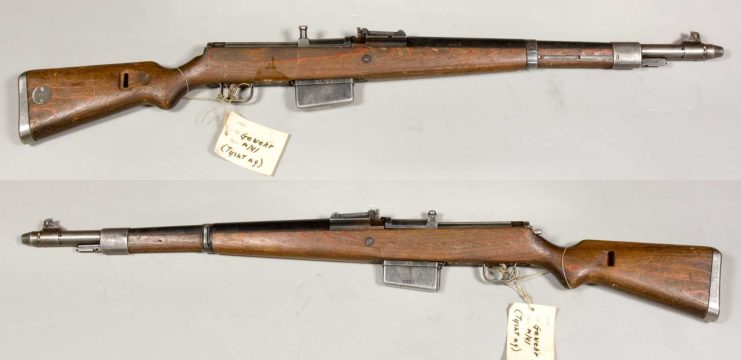
The Gewehr 43 was developed to replace the G41(M) and G41(W). The battle rifles, manufactured by Mauser and Walther Arms, had entered service with the Wehrmacht in 1941, and while they were equipped until the end of the Second World War, both had issues. This was primarily due to the requirement that gas ports not be drilled into their barrels, which led to them becoming near impossible to effectively use on the battlefield.
The G41(M) was known for being overly complex, clunky and heavy. As well, it was difficult for operators to achieve an accurate shot, as their sights were mounted on the gas tube at the front of the barrel, which would become unaligned after prolonged use. Over 6,600 were produced over the course of World War II. Of those, 1,673 had to be returned due to their shortcomings.
While the G41(W) faired a bit better, it still had a number of issues. Not only was it unreliable in combat, reloading proved to be incredibly difficult, due to its fixed magazine, which was fed by two clips. On top of that, both it and the G41(M) suffered muzzle corrosion due to the use of corrosive salts in the ammunition primer.
There were also difficulties with assembling and cleaning the rifles on the battlefield, due to their tight-fitting parts.
Developing the Gewehr 43
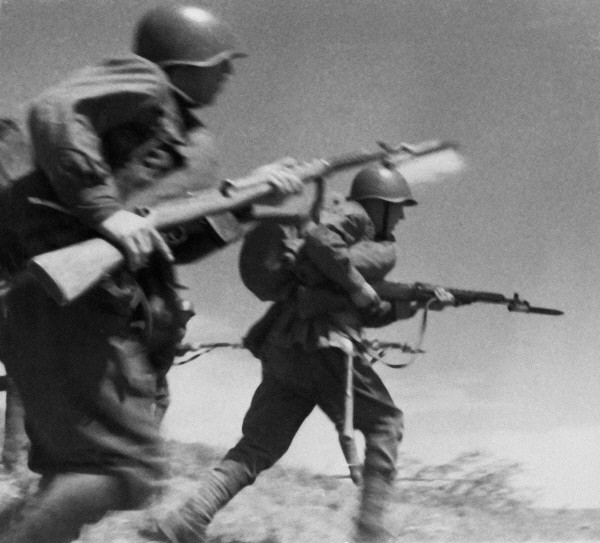
The issues with the G41(M) and G41(W) weren’t the only reason the Germans developed the Gewehr 43. When they launched Operation Barbarossa – the invasion of the Soviet Union – in 1941, they were surprised by the firearms being wielded by the Red Army. Little did officials know that, prior to the invasion, the Soviets had re-armed their infantrymen with newer, more powerful weaponry, including the SVT-40.
The SVT-40 was a semi-automatic rifle that used a simplistic gas mechanism powered by a port cut into the barrel. Additionally, it replaced standard stripped reloads with a more modern box magazine. As such, it was far superior to the battle rifles manned by the Wehrmacht.
This led Walther Arms to develop the G43, which blended elements of the G41(W) with a similar gas system to the Soviet rifle. It was lighter, more sturdy, tougher and easier to manufacture than its predecessors, which allowed for the production of 402,713 units over the course of WWII.
Along with Walter, the G43 was manufactured by Wilhelm Gustloff-Werke and Berlin-Lübecker Maschinenfabrik. Production of certain parts were also done via forced labor at Buchenwald and Neuengamme concentration camps.
Not long after the G43 hit the battlefield, in April 1944, its name was changed to the Karabiner 43. This was because the term Gewehr, which means “long rifle,” didn’t technically apply, as its barrel was two centimeters shorter than the standard-issue Karabiner 98k.
Gewehr 43 specs
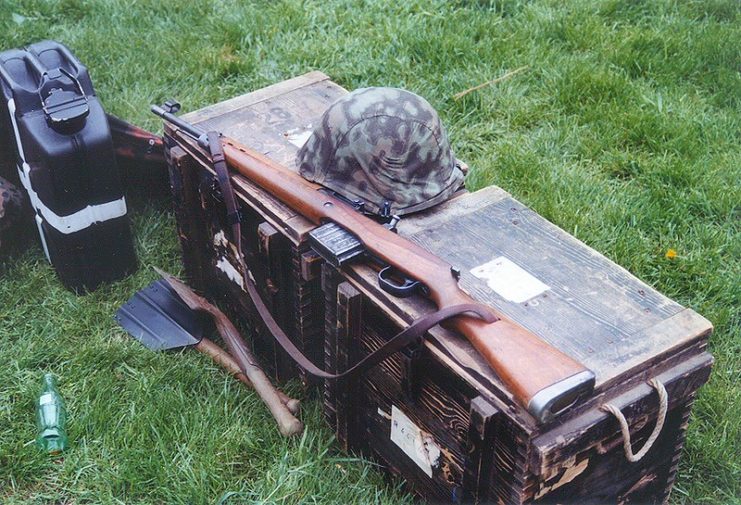
The Gewehr 43 was a sturdy and rugged semi-automatic rifle, made relatively cheaply. It weighed 9.7 pounds and was 43.8 inches long, with the barrel making up just under half of that length at 21.5 inches. The standard-issue versions featured an iron sight, with hooded pointed-post-type front sight and a tangent-type rear one. Around 55,335 sniper versions of the G43 were produced, and these featured the Zf42 scope.
As with a number of German-produced and -issued firearms, the G43 fired the 7.92 x 57 mm Mauser cartridge. It could either be fed through five-round stripper clips, which could be reloaded without removing the magazine, or a 10-round stamped-steel, detachable box magazine. While on the field, soldiers typically carried a G43 pouch with two spare magazines and one stripper clip pouch.
The G43 fired with a muzzle velocity of between 746-776 m/s, with a rate of fire of 30 rounds per minute. The standard version could fire 500 meters, while those equipped with the sniper scope could be effective at 800 meters.
When the name was changed from G43 to the Karabiner 43, an unknown amount of rifles were altered to fire the 7.92 x 33 mm Kurz cartridge and equip magazines used by the StG44 assault rifle.
Disorganized use during the Second World War
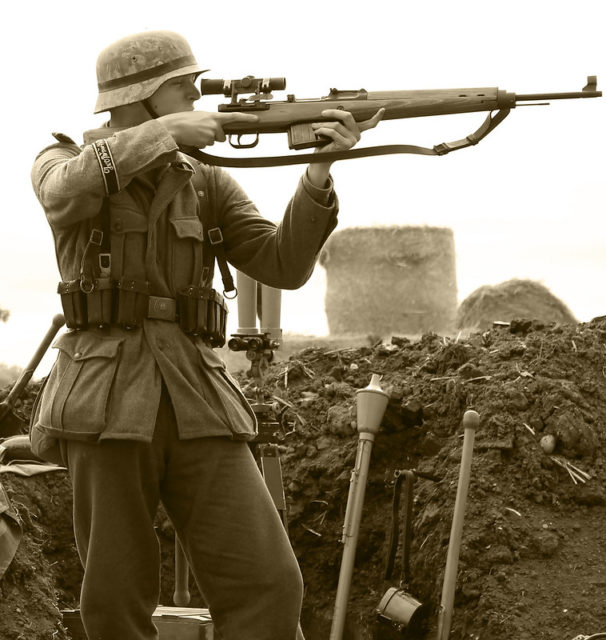
Upon entering service with the Wehrmacht in October 1943, the plan was to equip 19 Gewehr 43s to each infantry company, 10 of which were equipped with the Zf42 sniper sight. This was never fully realized, due to the state of the German Army at the time. As the Allies continued their successful push across Europe, military officials were never able to adequately distribute the rifle.
That being said, the G43 saw regular use with German special units, who praised it for its self-loading capabilities, rugged nature and overall power. Proof of its ruggedness were shown in its use as ladder rungs by the Gebirgsjäger when they were tasked with climbing mountains.
The Czech Army found the Gewehr 43’s sniper capabilities appealing
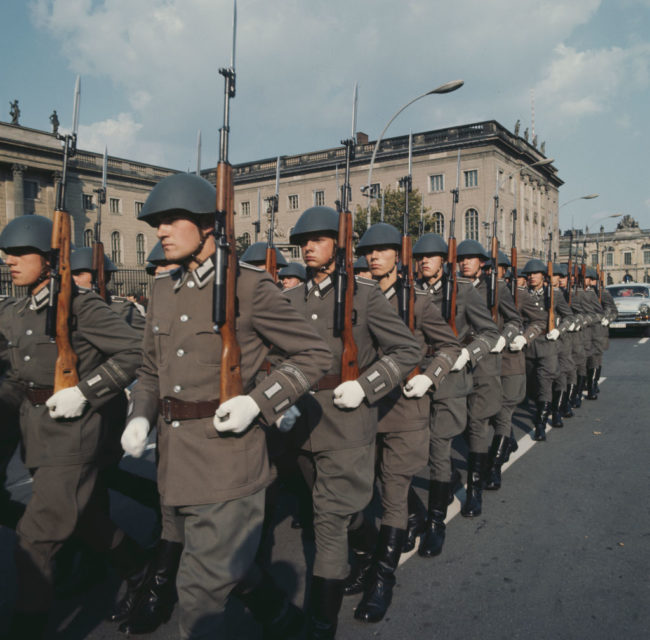
Following the Second World War, the Gewehr 43 was adopted by the Czech Army, which found the rifle’s capabilities as a sniper weapon particularly appealing. It remained in service in Czechoslovakia for several years, and was later adopted in East Germany by the Deutsche Volkspolizei and the Border Troops of the German Democratic Republic.
More from us: Schwarzlose MG: The Unusual Austro-Hungarian Machine Gun of World War I
Outside of Czechoslovakia and East Germany, the G43 also saw use in Romania and during the First Indochina War, with French soldiers armed with the semi-automatic rifles. Guatemala also purchased a handful of them from Czechoslovakia prior to the 1954 coup d’etat, while Brazil manufactured its own variant, the M954 Mosquetão. However, it was never fully adopted.
The post Gewehr 43: The German Semi-Automatic Rifle Inspired By the Soviet SVT-40 appeared first on warhistoryonline.
Post a Comment
0 Comments